When we left our intrepid pair of birders we had thoroughly enjoyed the appetizers of seawatching and sparrow-seeking and were hungry for the main course of rare-for-New York terns. Forgive me if I stretch the gastronomic analogy a bit too far, but Patrick and I could practically taste the Sandwich Terns that we were sure must be out on the mudflats of the bay side of Cupsogue Beach County Park. The sun was shining, the tide was rising, and the birds were calling; a cracking combination on a picture-perfect day.
So, of course, within minutes of starting our walk across the mudflat Patrick’s sandals gave up the ghost and he had to turn back for more suitable footwear. While I waited for him to return I was pretty sure I spotted a Roseate Tern way off in the distance, a bird that would be a lifer for Patrick, but by the time he returned it was gone. Was The Belardo Curse still in effect?
Once we were well out on the mudflat we paused to admire some of the many species present. Semipalmated Plovers, Willets, American Oystercatchers, Ruddy Turnstones, Red Knots, Black-bellied Plovers, and Semipalmated Sandpipers were just the shorebird tip of the avian iceberg, an iceberg both Patrick and I wished was literal as the sun was cooking us alive on the shadeless mudflats.
Red Knots Calidris canutus above and below followed by American Oystercatcher Haematopus palliatus
Shorebirds are nice and worth looking at but we weren’t in the middle of a mudflat because we wanted to see shorebirds; we had come for rare terns. And, eventually, we found not just one but two Roseate Terns! A lifer for Patrick, and, I think, the conclusive breaking of The Belardo Curse!
Roseate Terns with Common Terns and a happy Patrick scoping the birds below
We did not rest upon finding our Roseate Terns but kept searching, hoping for Arctic Tern, Sandwich Tern, or Black Tern but finding none of them. We were joined by Steve Walter, a great nature photographer who also is often kind enough to help me identify my dragonfly and butterfly pictures, and just enjoyed being on the mudflat looking at birds.
Black Skimmer with Common Terns above and Herring Gull eating a crab below
We spent the rest of our birding day looking for and failing to find more good birds (with the exception of a single Greater Shearwater during a brief seawatch at Fire Island) and letting Steve guide us to a great spot for damselflies, which I will be posting about soon enough. It was a successful day birding in the hot sun and well worth the sunburn that still plagues me.


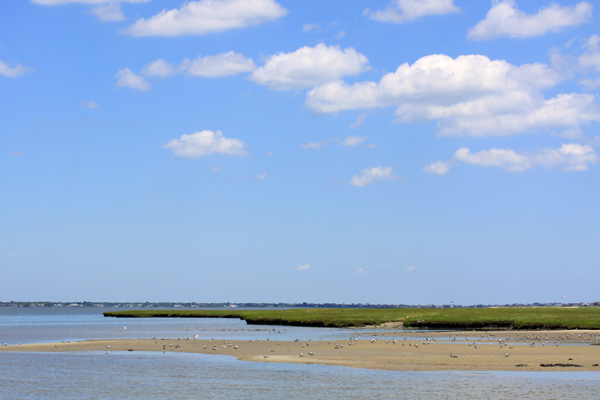
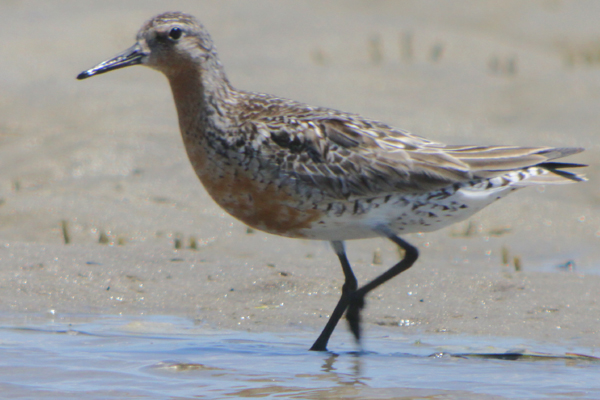
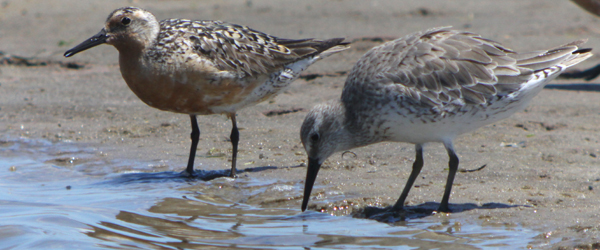
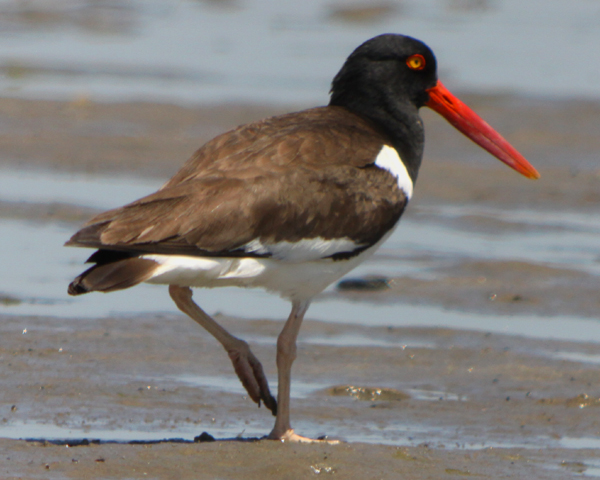
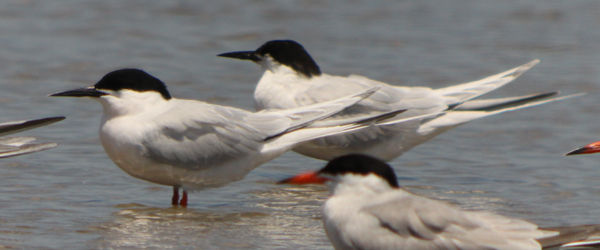
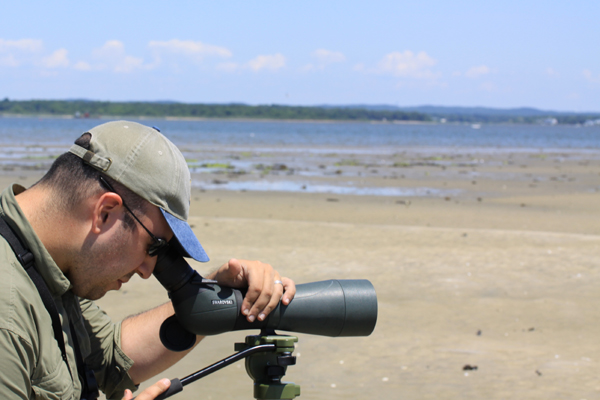
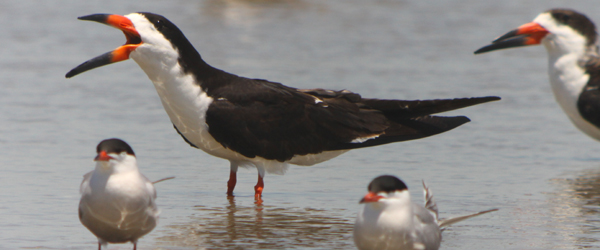
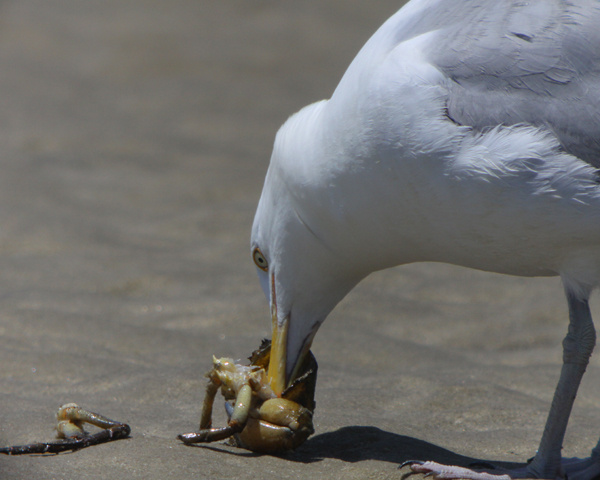
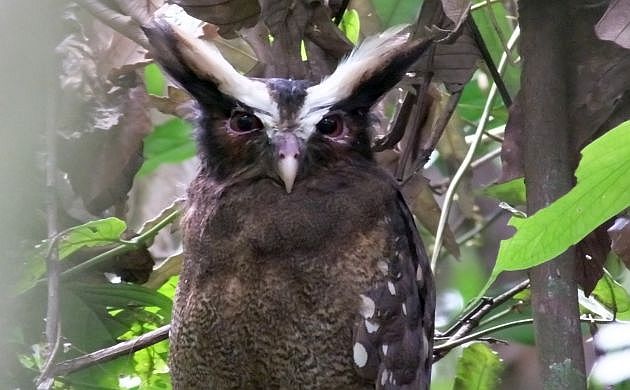
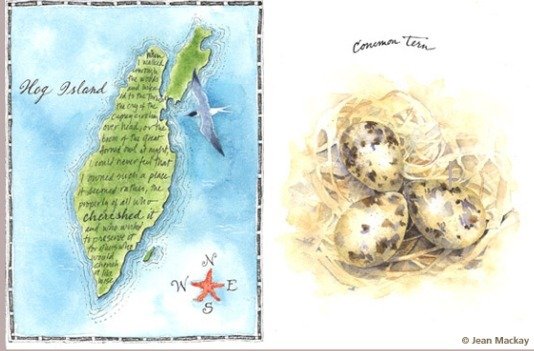

 New writers welcome – please contact us for details.
New writers welcome – please contact us for details.

















Nice work. Now I can go birding with Patrick again!
Hahaha, thanks Mike. And thanks Corey.
That pic of me must have been pretty early because I wasn’t a shiny, purple sunburn victim yet.
Let’s plan to do it again in 2011. Maybe Mike will come down and join us. BTW, what the heck were we thinking wanting to stay for nightjars on the longest day of the year? I’m glad we went home instead. I would have been a zombie.
Congrats to a fellow Patrick on getting a lifer. I still need that tern! I didnt know that those shorebirds and gannets would be around in June. Overall, sounds like a great day of birding.
Congrats to Patrick on the Roseate Terns! I’ve managed to see life birds in Patrick’s presence so I’m not convinced this curse was ever operative.
Patrick, I am impressed. That was a long distance to go, just to bird with Corey. Good thing you got a Life Bird. (I too got my life Roseate Tern at Cupsogue this spring. I need to go back and see it closer, the tides were not with me and the bird was quite far.)
Looking forward to the damsels! Those are my favorite odenates. And some Steve stories too.